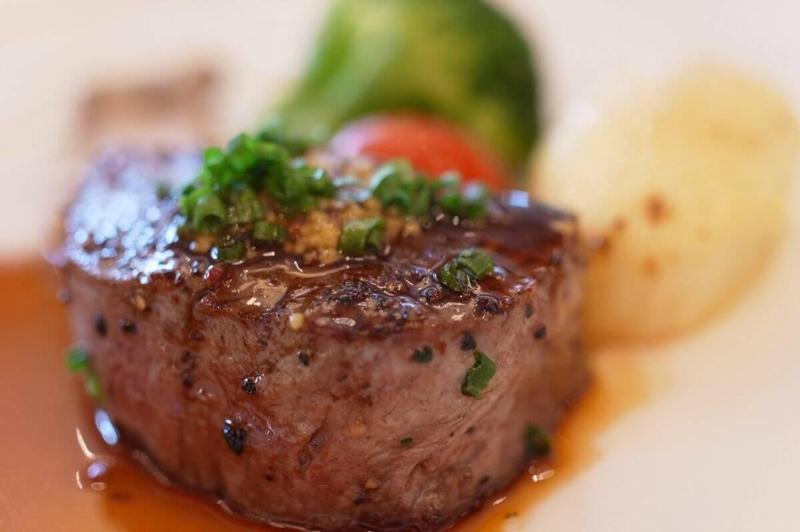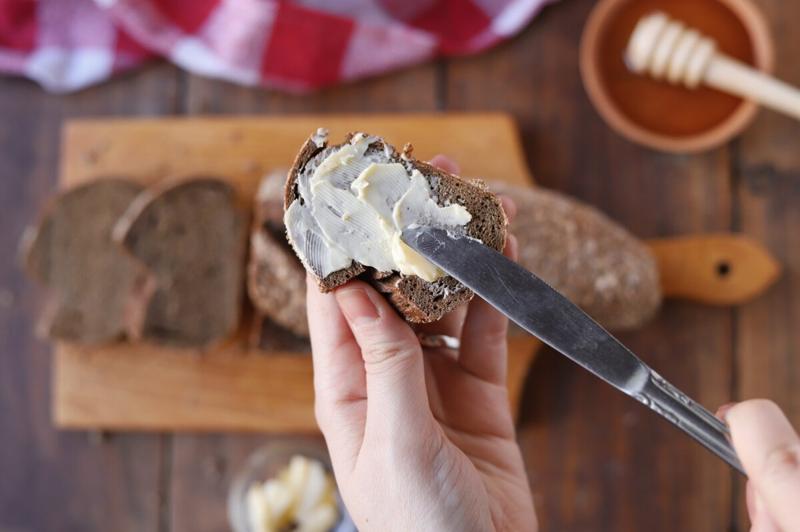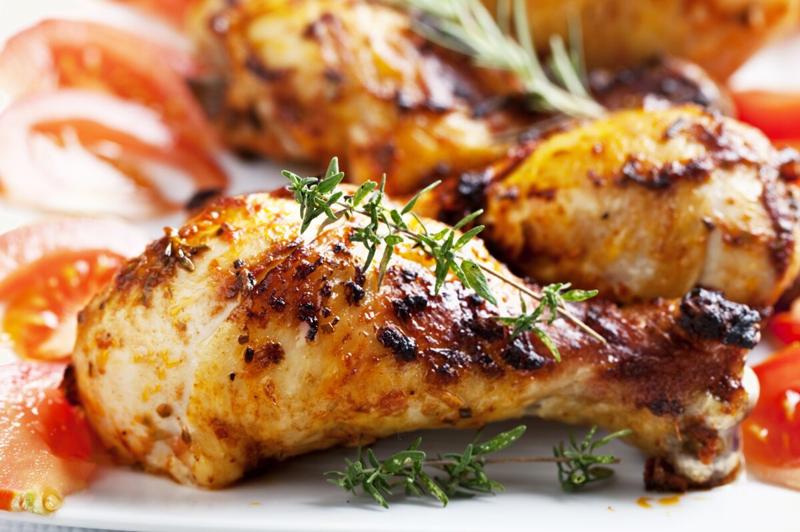 The Atkins diet is a popular low-carb diet that has been effective for short-term weight loss. It focuses on consuming protein-rich foods like fish, beef, chicken, and pork while limiting carbohydrates. This restriction prompts the body to utilize stored fat for energy. Our review provides an overview of the Atkins Diet, including its various phases, allowed and restricted foods, and its effectiveness for weight loss.
The Atkins diet is a popular low-carb diet that has been effective for short-term weight loss. It focuses on consuming protein-rich foods like fish, beef, chicken, and pork while limiting carbohydrates. This restriction prompts the body to utilize stored fat for energy. Our review provides an overview of the Atkins Diet, including its various phases, allowed and restricted foods, and its effectiveness for weight loss.
What is the Atkins Diet?
The Atkins diet, developed by Dr. Robert Atkins, is a low-carb diet that gained popularity after the release of "Dr. Atkins' Diet Revolution" in 1972. This diet emphasizes the consumption of protein-rich foods such as fish, beef, chicken, and pork.
How does the Atkins Diet work?
At each meal, you should eat 4 to 6 ounces of protein. You’ll also be allowed one serving of fat at each meal, such as butter, salad dressing or olive oil. Fill the rest of your plate with low-carb vegetables, such as spinach, bell pepper, cucumber and tomato.
Atkins Diet Four-Phase Plan:
Phase 1: Induction
You’re allowed 20 grams of net carbs daily on the traditional Atkins 20 plan. Net carbs are calculated by subtracting fiber and sugar alcohols from the carbohydrate in grams. For example, if something contains 15 grams of carbs and 5 grams of fiber, the net carbs are 10.
Of the 20 grams, 12 to 15 grams should come from nonstarchy vegetables or “foundation vegetables,” such as arugula, cherry tomatoes and Brussels sprouts. Besides vegetables, you’ll mainly eat meat, poultry, seafood, cheese, eggs and oil or butter at every meal.
This phase only lasts two weeks, depending on your weight loss goals.
Phase 2: Balancing Your Diet
At the start of the second phase, you'll eat 25 grams of net carbs daily, then gradually increase your overall carb intake by 5 grams until you find your personal carb balance, ranging from 30 to 80 daily grams of net carbs. This will add more carbs to your Atkins diet food list, such as vegetables, berries, nuts and seeds.
You stay in the balancing phase until you’re within 10 pounds of your goal weight.
Phase 3: Maintaining Your Weight After Dieting
You’ll continue to increase your carb intake in 5 to 10 gram increments to include more fruits, starchy vegetables and whole grains until you’ve reached your goal weight. By the end of this phase, you'll likely consume 80 to 100 grams of net carbs daily.
You'll stay in phase 3 until you've reached your goal weight and maintained it for a month.
Phase 4: Lifetime Maintenance
Most people maintain an intake of 40 to 120 grams of net carbohydrates daily for the rest of their lives to maintain their lost weight. If you want to continue using Atkins, consider Atkins 100, a plan recommended for those who want to maintain their current weight. It allows 100 grams of net carbs daily.
Keep in mind that a food low in net carbs doesn’t always mean it’s a healthy choice to keep your weight in check. The idea of net carbs “seems mostly to be used as a way to sell highly-processed foods full of synthetic ingredients to low-carb dieters," says Monica Reinagel, a licensed nutritionist, host of the Nutrition Diva podcast and co-founder of the Weighless program. "A candy-like bar loaded up with fiber and sugar alcohols doesn't sound like much of a treat to me, but it also doesn't sound like much of a meal.”
Can I Lose Weight on the Atkins Diet?
Short-Term Weight Loss
In short-term studies, weight loss and a decrease in body fat – while preserving lean muscle – are generally reported on the ketogenic diet, which is similar to Atkins in many respects.
Because of this, it is not uncommon for Atkins dieters to report a loss of 6 to 15 pounds in the first two weeks. However, this does not represent fat loss. Instead, initial weight loss is usually water weight.
In many studies, this weight loss is greater than the loss on a standard low-calorie diet in the first six months. This is especially true in the first week or two when it is not unusual to drop several pounds rapidly.
In a 2017 study, 90% of the participants on a ketogenic diet lost 5% of their body weight, while only 29% in the control group achieved the same (1).
Evidence shows that ketogenic and low-carb diets may suppress appetite. One study found participants lost an average of 13% of initial weight by following a very low-calorie diet that induced ketosis for eight weeks, then two weeks of food reintroduction. In this case, participants reported being less hungry, and their hunger hormone levels reflected that feeling (2).
A review of more than 120 studies and 21,942 participants, found that low-carbohydrate diets resulted in an average weight loss of 10.19 pounds after six months. For comparison, the low-fat diets brought about an average loss of 9.61 pounds. The highest average weight loss was attributed to the Atkins diet – about 12 pounds. However, after one year, overall weight loss pretty much disappeared for all participants, regardless of diet (3).
Long-Term Weight Loss
“The Atkins diet, just like any diet, is not sustainable for the long term. While you may lose weight in the short term, the vast majority of people who lose weight with diets will gain it back through no fault of their own, because the human body is wired for survival,” explains Alissa Rumsey, a nutrition therapist based in New York City and the author of “Unapologetic Eating.” “This type of yo-yo dieting – or weight cycling – is more detrimental to your health than staying at a higher weight,” Rumsey says.
Research supports the idea that protein increases feelings of fullness, and being in ketosis changes hormone levels related to appetite. "A diet that is low enough in carbohydrates to put you into ketosis may, in fact, suppress your appetite, even though you are reducing your calorie intake,” Reinagel says.
However, she adds, “Unfortunately, as soon as you exit ketosis, the effect is reversed. And that may be why these diets tend to be very effective at producing rapid weight loss – but not as good at promoting lasting weight loss.”
Weight Maintenance and Management
Only the most devoted people can stick to a diet that provides no more than 120 grams of carbohydrates daily for the rest of their lives. After all, a single slice of pizza contains around 35 grams, while a piece of a birthday cake will set you back about 75 grams.
According to the National Weight Control Registry, of more than 2,600 people who maintained at least a 30-pound weight loss for one year or longer, less than 1% did so on the Atkins diet or a similar plan. Instead, most successful weight loss maintainers were on a high-carbohydrate, low-fat diet (5).


Do: Eat steak and other meats if you like them.
How to Get Started on the Atkins Diet
Here are tips for beginners:
Stock up on fish, beef, chicken and other proteins. Eat one 4- to 6-ounce serving at each meal.
Add a serving of fat to each meal. Butter, salad dressing and olive oil are fair game.
Round out your meals with leafy greens and other low-carb vegetables.
Stock the kitchen with lean proteins and non-starchy vegetables.
Start looking at nutrition labels, paying particular attention to carbohydrates, fiber and sugar grams.
Begin to take a high-quality vitamin and mineral supplement.
Choose an exercise regimen that you can stick with.
Aim for at least eight glasses of water each day.
For more guidance, check out the Atkins lifestyle book “Atkins: Eat Right, Not Less." You can also buy books from "The New Atkins for a New You" series, which includes a guide and cookbook
What Does the Atkins Diet Cost?
You do not have to purchase any special food products to follow the Atkins diet, although Atkins-branded snacks, frozen meals and shakes are available if you choose to buy them.
Is Adkins Easy to Follow?
The Atkins diet isn’t known for its convenience. At home, building variety into meals is a little harder than usual. Eating out also takes more effort. Alcohol is limited. Company-branded food products and online resources may be helpful if you’re struggling to stay on track. In 2013, Atkins launched a frozen-food line.
Atkins provides meal plans, recipes with ingredient lists and food carb counts, all in a print-friendly format. There is a smattering of recipes across various cuisines, from American to Middle Eastern to French to Asian.
Who Should Not Try the Atkins Diet?
Anyone with kidney disease or a history of kidney stones should avoid a high-protein or ketogenic diet such as the Atkins plan.
Pregnant women should go directly to the phase four long-term maintenance stage.
Adolescents and people with diabetes or prediabetes should consult their doctors before starting this or any other diet plan.
Individuals with decreased bone density or diagnosed with osteoporosis should avoid this plan.
Athletes need carbohydrates for energy, so this diet style is not recommended for especially active people.
Rumsey cautions that “going on a restrictive diet like Atkin's diet can cause disordered eating behaviors, such as feeling anxious and out of control around food, opting out of social functions for fear of what food will be there, increased food cravings and binge eating.”
Pros
Convenient – grab and go options.
A clearly defined plan with recipes.
Cons
Potential for monotony unless you customize.
Eating out is limited.
Unsafe for some people.
Lots of rules to remember.
Little research to back it up.
Could fall short nutritionally.
What Can I Eat? Do's and Don'ts of the Atkins Diet
Foods to Eat
Beef, poultry and fish.
Eggs.
Butter.
Salad dressings.
Oils.
Cheese.
Non-starchy vegetables, such as Brussels sprouts, radishes and mushrooms.
Melon, cherries and berries are allowed after the two-week induction period.
Nuts and seeds (allowed after two weeks).
Atkins products, including bars and shakes.
Foods to Avoid (or Limit)
Grains.
Fruit.
Milk and yogurt.
Any processed food containing sugar.
Beans, peas, and lentils.
Starchy vegetables, including carrots, potatoes, corn and winter squash.
Vegan and Following the Atkins Diet
The vegan or vegetarian option of the Atkins diet is sometimes referred to as Eco Atkins. Researchers at St. Michael’s Hospital in Toronto developed the plan to see if it could reduce blood pressure, triglycerides and glucose like the original iteration does. It worked.
Followers lost the same amount of weight and enjoyed similar drops in blood pressure and cholesterol but also saw significant improvement in their LDL cholesterol levels. The participants consumed a diet of roughly 31% protein, 43% fat and 26% carbs. The Eco Atkins plan keeps the same ratio of protein and carbs as the original, but instead of beef and cheese, you’ll be chowing down on soy and other plant-based proteins. See all vegan diets.
Vegetarian and Following the Atkins Diet
Vegetarians can certainly stick to the Atkins diet if they are willing to eat a limited number of foods. You’ll primarily eat plant protein such as nuts, beans, soy burgers, soy milk, tofu and items like vegetarian deli slices and breakfast links. Avocado, olive oil, a small amount of fruit and select grains will add a bit of variety to your menu.
Due to “heavy restrictions, limited protein sources and the high carbohydrate count, the Induction Phase may prove difficult for vegetarians and Eco Atkins dieters,” according to the Atkins website. Instead, they recommend beginning with either the Atkins 20 Phase 2 or the Atkins 40. See all vegetarian diets.
Gluten Free and Following the Atkins Diet
It would be relatively easy to adhere to a gluten-free diet while on Atkins. After all, eggs, meat, poultry and vegetables do not contain gluten. See all gluten-free diets.
Halal and Following the Atkins Diet
Because many Atkins products contain collagen, they are not halal. However, you don't have to purchase the products to do the plan. See all halal diets.
Kosher and Following the Atkins Diet
The collagen in Atkins products means they can’t be certified as kosher. However, you can do the program without relying on packaged Atkins foods. See all kosher diets.







